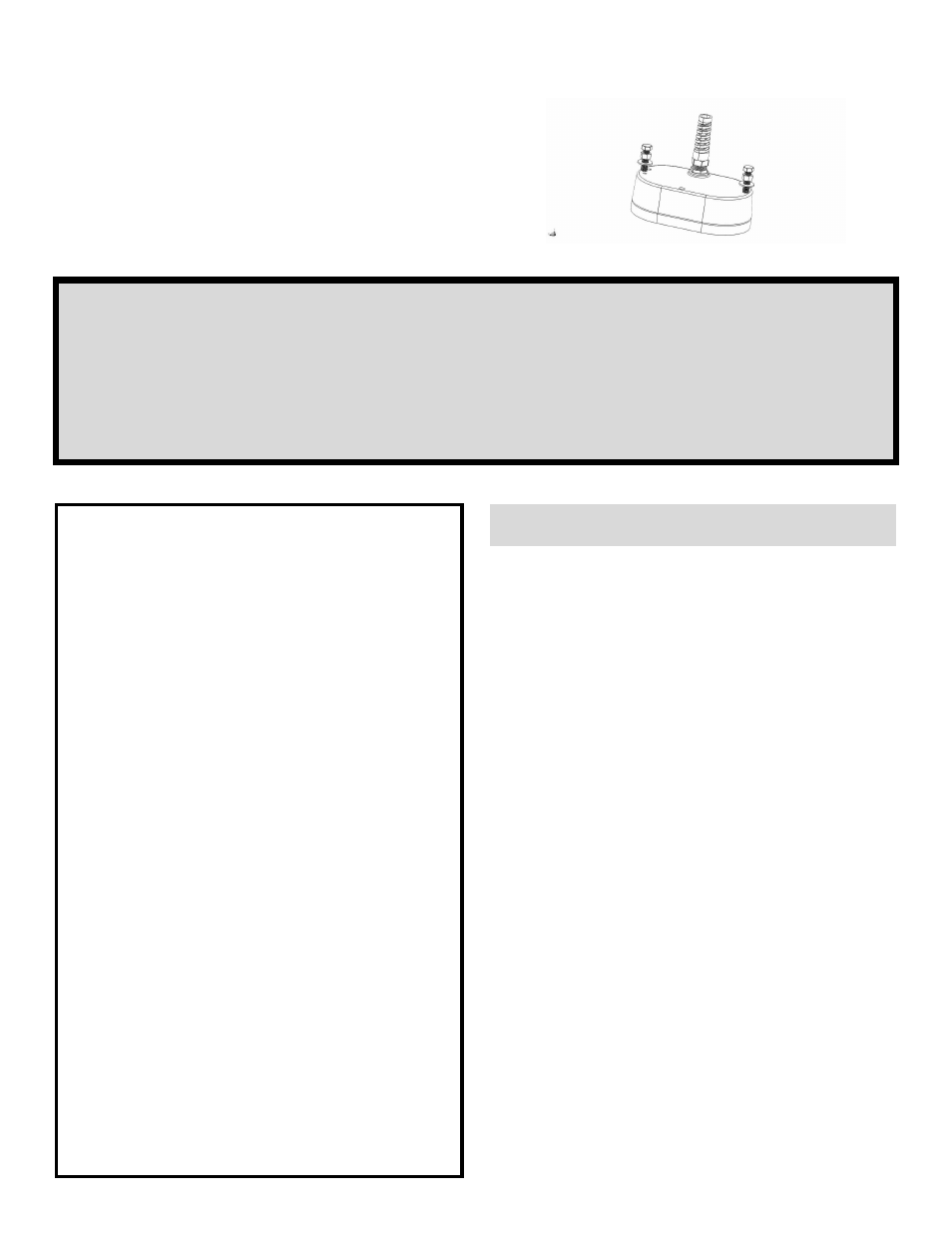Airmar PM260—Pocket or Keel-Mount User Manual
Installation instructions owner’s guide, Pocket/keel mount depth transducer

Follow the precautions below for optimal
product performance and to reduce the risk of
property damage, personal injury, and/or death.
WARNING: Always wear safety goggles and a dust
mask when installing.
WARNING: Immediately check for leaks when the
boat is placed in the water. Do not leave the boat
unchecked for more than three hours. Even a small
leak may allow considerable water to accumulate.
CAUTION: CHIRP transducer—Do not install in the
engine compartment or other hot place. The
transducer may fail if it overheats.
CAUTION: CHIRP transducer—Always operate the
transducer in water. Operating in air will allow the
transducer to overheat resulting in failure.
CAUTION: The transducer must be flush with the
bottom of the hull for good performance. Dry fit the
transducer in the pocket before installing.
CAUTION: Never install a metal housing on a vessel
with a positive ground system.
CAUTION: Never mount a bronze transducer in a
metal hull, because electrolytic corrosion will occur.
CAUTION: Never pull, carry, or hold the transducer by
the cable. This may sever internal connections.
CAUTION: Never strike the transducer.
CAUTION: Never use solvents. Cleaners, fuel, sealant,
paint and other products may contain solvents that can
damage plastic parts, especially the transducer’s face.
IMPORTANT: Please read the instructions completely
before proceeding with the installation. These
instructions supersede any other instructions in your
instrument manual if they differ.
17
-5
66
-0
1 re
v.06
01
/09
/14
Pocket/Keel Mount
Depth Transducer
with Temperature Sensor
Models: PM260, PM265LH, PM265LM, PM270W, PM275LH-W
U.S. Patent No. 7,369,45; 8,582,393. UK Patent No. 2 414 077
Applications
• Recommended for fiberglass hulls
• Recommended for high-speed boats
Tools & Materials
Safety goggles
Dust mask
Scissors
Masking tape
Electric drill (some installations)
Drill bits and hole saws: (some installations)
Bolt holes
11mm or 7/16"
Pilot hole for cable
8mm or 5/16"
Cable hole
35mm or 1-3/8"
Sandpaper (some installations)
Mild household detergent or weak solvent (such as alcohol)
Marine sealant (suitable for below waterline)
Torque wrench
Grommet(s) (some installations)
Cable ties
Water-based anti-fouling paint (mandatory in salt water)
NOTE: Making a fiberglass pocket in the hull requires additional
tool and materials not listed.
Installation: Pre-molded Pocket in the Hull
Metal Template Available
If the boat hull has a molded pocket to accept a pocket mounted
transducer, a metal template is available from the marine dealers
listed on page 3.
Order a PM265 Template. This template is the correct size for all
of the models listed on this owner’s guide.
Record the information found on the cable tag for future reference.
Part No._________________Date___________Frequency________kHz
INSTALLATION INSTRUCTIONS
OWNER’S GUIDE &
WARNING: The transducer must be professionally installed
using accepted practices. The pocket must be strong and
watertight to reduce the risk of property damage, personal
injury, and/or death.
